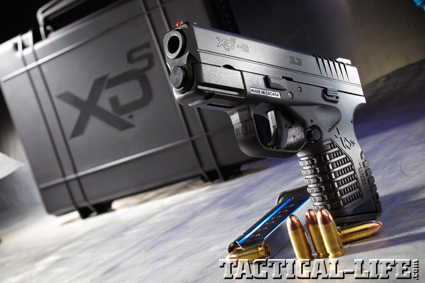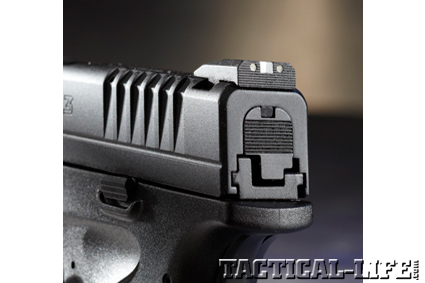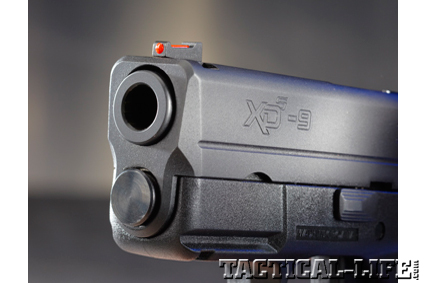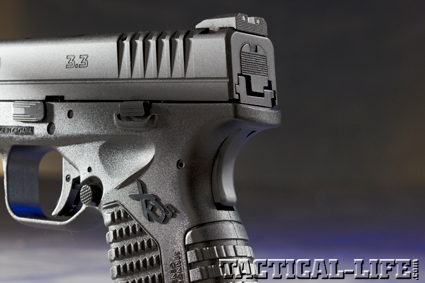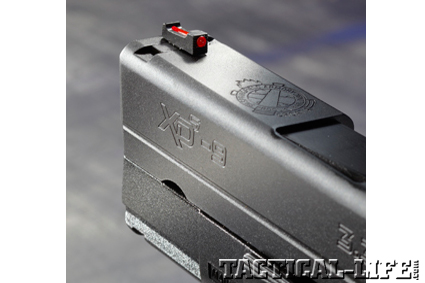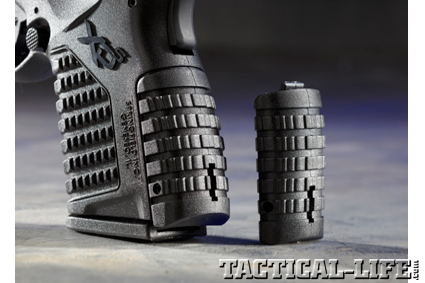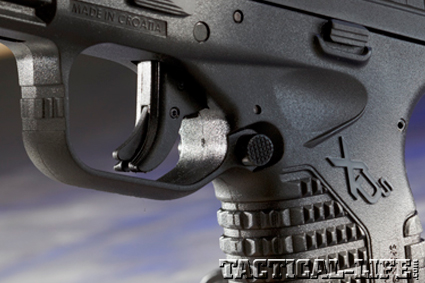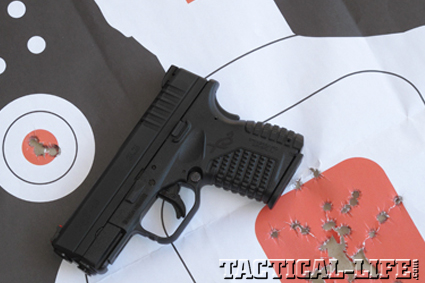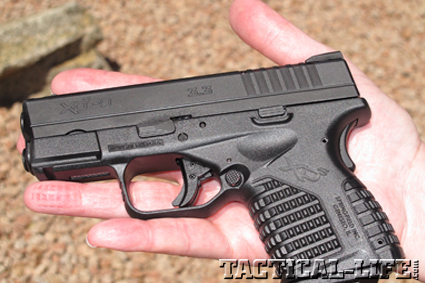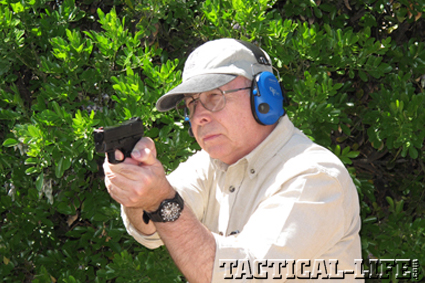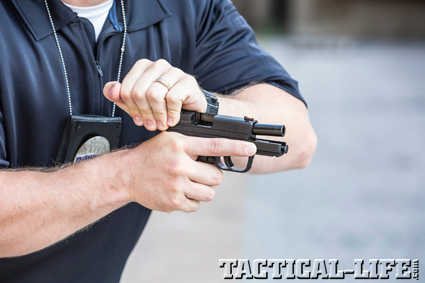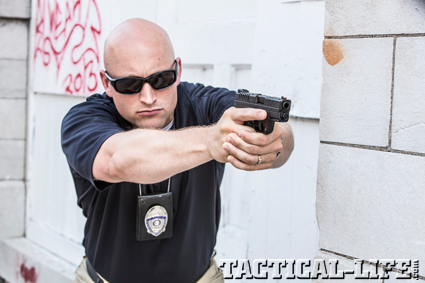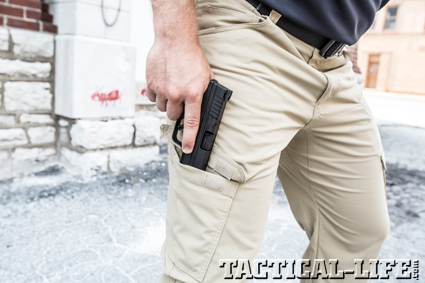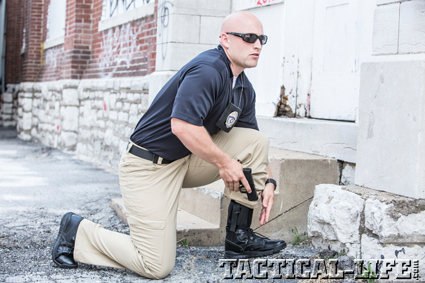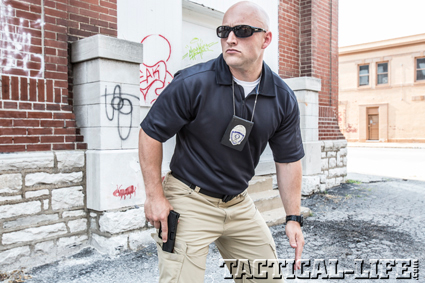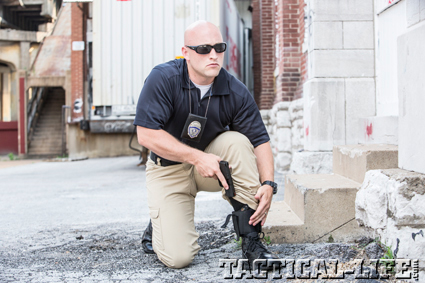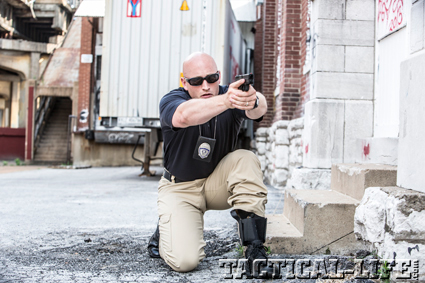For all the tools at the disposal of the law enforcement officer, the one they rely upon the most for their survival is the duty sidearm. When things go bad, this one piece of equipment can ensure they (or civilians they are protecting) make it home that night. But, a sidearm is a mechanical thing, and all mechanical things have the potential to malfunction. So, what do the prudent LEOs do? They likely carry a backup gun. It’s really an acknowledgement of Murphy’s Law that goes something like “If it can go wrong, it will go wrong”-and often at the worst time.
As opposed to the duty sidearm, the backup gun must be both compact and powerful. Size and weight are at a premium, but adequate power is also a must. A good example of this type of firearm is the new Springfield XD-S 9mm, a polymer-framed, single-stack pocket pistol that still packs 7+1 rounds.
Gun Details
Advertisement — Continue Reading Below
The 9mm cartridge has been around since 1902, but it’s always been viewed by many who carry guns for a living as the bare minimum acceptable for self-defense. In the past, it was viewed as not having the stopping power many desired. That has changed, though, and even some old die-hard .45 ACP fans are switching to 9mm. That’s due largely to engineers and ballisticians creating a projectile that actually expands and penetrates, delivering energy and wound cavities that before were possible only with heavier, larger-diameter bullets. An added bonus that comes with the 9mm is that it recoils less, and because the cartridges are smaller, these guns are able to carry more rounds.
The 9mm XD-S holds a respectable seven rounds in its single-stack magazine, and an extended-capacity magazine holding nine rounds is available. In this time when attacks involving more than one assailant are increasing, more rounds on board is a good thing. With a barrel length of 3.3 inches, the overall length of the XD-S is kept to 6.25 inches. It is less than one inch in width and is only about 4.5 inches high with the seven-round magazine in place. That makes the gun small enough to be carried completely out of sight in a pocket, on the ankle or in a bellyband holster beneath the shirt. The magazines are also small enough that an officer can also carry a spare discreetly.
The appeal of the XD-S stems partly from the parent gun, the XD, that was introduced back at the turn of the century. Because of its many features that appealed to American shooters, Springfield sold a lot of guns. The company then made some modifications that enhanced the original design and released the XDM line. The XD-S is very similar to both versions, except it is smaller, thinner and lacks the cocking indicator.
Advertisement — Continue Reading Below
While small guns have tiny grips that make them hard to control under recoil, there is something about the XD-S design that makes holding on not as difficult. It could be the aggressive, deeply cut checkering on the front, sides and backstrap, or the fact that the polymer frame tends to absorb some recoil. It also may have to do with the undercut at the rear of the triggerguard that allows the shooter to obtain a slightly higher grip, putting the axis of the bore lower in the hand, which has a tendency to reduce muzzle flip.
The triggerguard is generously cut, allowing plenty of room for a gloved trigger finger, and the front of the guard has grooves to provide a slip-resistant surface for the support-hand index finger if the shooter utilizes that style of grip. The XD-S is supplied with two interchangeable backstraps—a small and large size—that can easily be swapped by driving out a retaining pin with a punch and hammer.
Pistols of the XD line, including the new XD-S, feature grip safeties. While some may think of it as unnecessary, it is a nice safety feature than can be very useful. By removing the thumb of the firing hand from the normal place along the side of the grip and instead putting it on the back of the slide, the grip safety is no longer depressed and the trigger cannot be pulled far enough to release the striker. If the trigger catches on something that accidentally makes its way inside the triggerguard, an accidental discharge that might put a round in a body part or some other object is a lot less likely.
Advertisement — Continue Reading Below
The trigger is equipped with Springfield’s Ultra Safety Assurance (USA) trigger system, which has a lever in the face of the trigger to prevent it from being pulled through its complete arc unless it is pressed in the normal manner. Additionally, the gun is equipped with a striker block that is designed to prevent the striker from being released and igniting a round unless the trigger is pulled. All this makes it much safer to carry the gun with a round in the chamber.
When a round is in the chamber, a lever protrudes from the top of the slide, indicating that a round is in the tube and ready to be fired. Savvy shooters, of course, will press-check to verify this because mechanical devices can fail. If the gun is dirty, crud can cause the loaded-chamber indicator to stick up even though the chamber is empty. I’ve seen it happen, but the indicator is still a nice feature.
The forged-steel slide is finished in Melonite, a hard metal treatment that is resistant to wear and corrosion. Corrosion resistance is a very important feature because a backup gun will often be carried close to the body, where it is subjected to sweat. The slide has deeply cut serrations at the rear to provide a good grip for manipulations. Atop the slide is a fiber-optic front sight along with a snag-resistant, drift-adjustable rear sight featuring a generous square notch with two white dots. Together, they make the sight picture easy to acquire in a hurry. Unlike a lot of small guns, this one doesn’t have little nibs on the top of the slide that are nearly impossible to see, especially in low light. These are real sights worthy of a full-sized service pistol. Springfield Armory even provides spare fiber-optic inserts—a red and a green one—and directions on how to easily remove and replace them.
Advertisement — Continue Reading Below
Besides the trigger, the only other controls are the magazine release and the slide catch. The magazine release really is ambidextrous. It is located at the juncture of the triggerguard and grip and can be pushed from either side with the thumb or trigger finger. When pushed, the magazine dropped freely from my test gun, and the magazine well is beveled to encourage the replacement magazine to slide in easily for fast reloads. The slide catch is located above the grip on the left side of the gun, and it protrudes just enough to allow easy activation. It’s protected by a small fence to reduce the possibility of being accidentally engaged.
In front of the triggerguard, the gun is equipped with a Picatinny rail to allow for the attachment of a tactical light, a laser or a combination unit, which is a very good idea. Since most life-threatening attacks occur in low light, being able to see the attacker is really important.
Taking the gun apart for cleaning is simple. First, after making sure the XD-S is unloaded by removing the magazine, checking the chamber and double checking it, pull the slide to the rear and lock it with the slide catch. Then rotate the takedown lever, located on the left side of the gun, clockwise 90 degrees. With a secure grip on the slide, release it from the slide catch, allowing the slide to move forward. While pointing the pistol in a safe direction pull and release the trigger. The slide can then be removed from the frame. That’s it. Assembly is in reverse order.
Besides the spare fiber-optic inserts mentioned earlier, the gun comes in a hard carrying case that includes a spare seven-round magazine, a polymer paddle holster and a belt-slide dual magazine pouch.
Advertisement — Continue Reading Below
Range Time
I experienced no problems while shooting the test gun. The XD-S’ trigger broke at around 6 pounds after about 0.25 inches of take-up and some creep. There was little overtravel. During the entire test period, not a single malfunction of any kind occurred. Whether the large or small backstrap was in place, the gun was comfortable to shoot and pointed well. Most shooters will likely have a preference for the large or small grip, but I didn’t and was happy with either.
The 9mm XD-S was accurate, too, while testing it at a distance of 7 yards, with the best group measuring 0.74 inches. And in tactical drills, it was fast to get on target initially and reacquire the target for follow-up shots. When I used the nine-round extended magazine, the XD-S was even faster because of the additional gripping surface that offered more control.
Advertisement — Continue Reading Below
Backup guns have saved officers’ lives in the past and will do so in the future. When the primary gun breaks or runs out of ammunition, a reliable backup like the 9mm Springfield XD-S can be a true lifesaver. For more information, visit springfield-armory.com or call 800-680-6866.
